Meningitis teenager shares photos to raise awareness
- Published
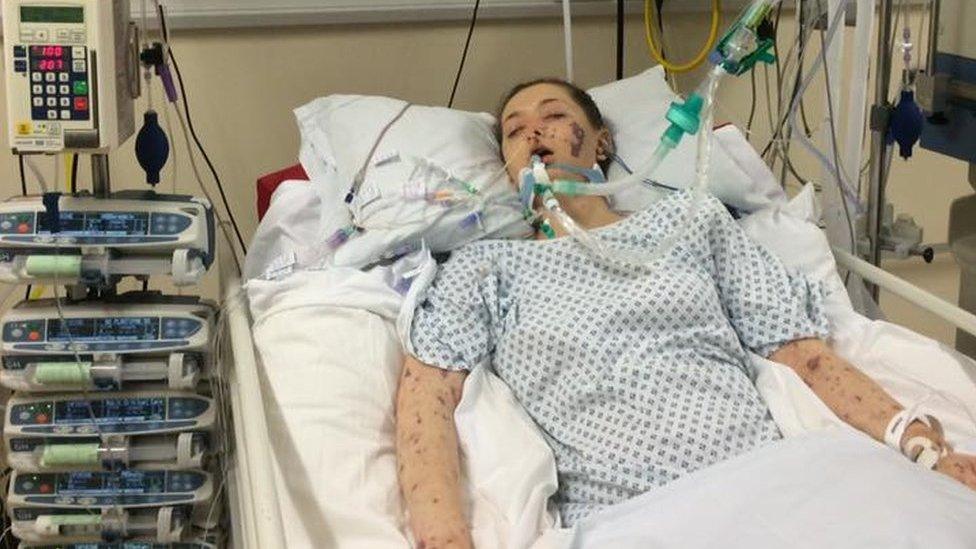
Charlene Colechin said she feels lucky to be alive after being struck by meningitis
A teenager who nearly died from meningitis has shared photos of her rash-covered body in an attempt to raise awareness of the disease.
Charlene Colechin, 18, described how her organs failed, causing her "to die" until doctors managed to save her.
The hair stylist, from near Chesterfield in Derbyshire, has been in hospital for a month and spent nine days in a medically induced coma.
She still faces surgery to remove her toes and possibly her feet.

The 18-year-old is a hair stylist and makeup artist
Speaking from Sheffield Hospital, Miss Colechin said she felt lucky to be alive.
"I was screaming because I was in that much pain," she said.
"I kept throwing up, then I had a really bad headache like a migraine, and all my body was aching."
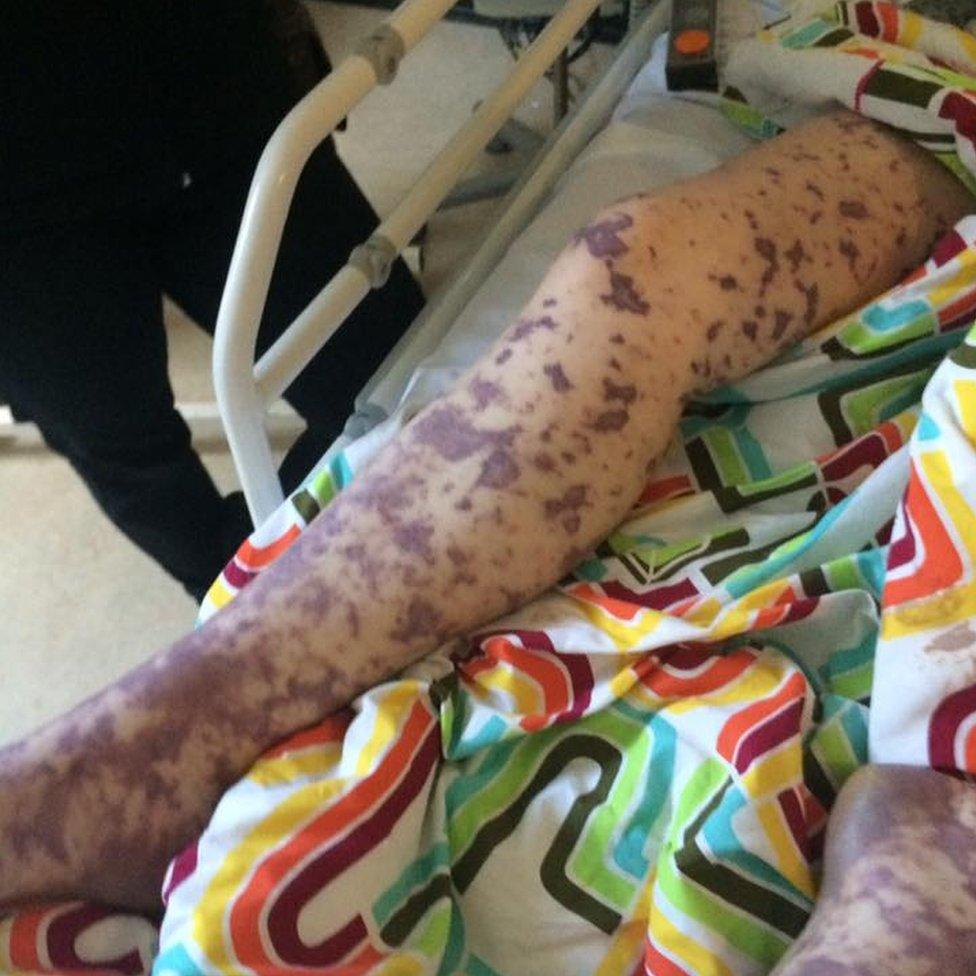
Charlene Colechin has been in hospital for a month
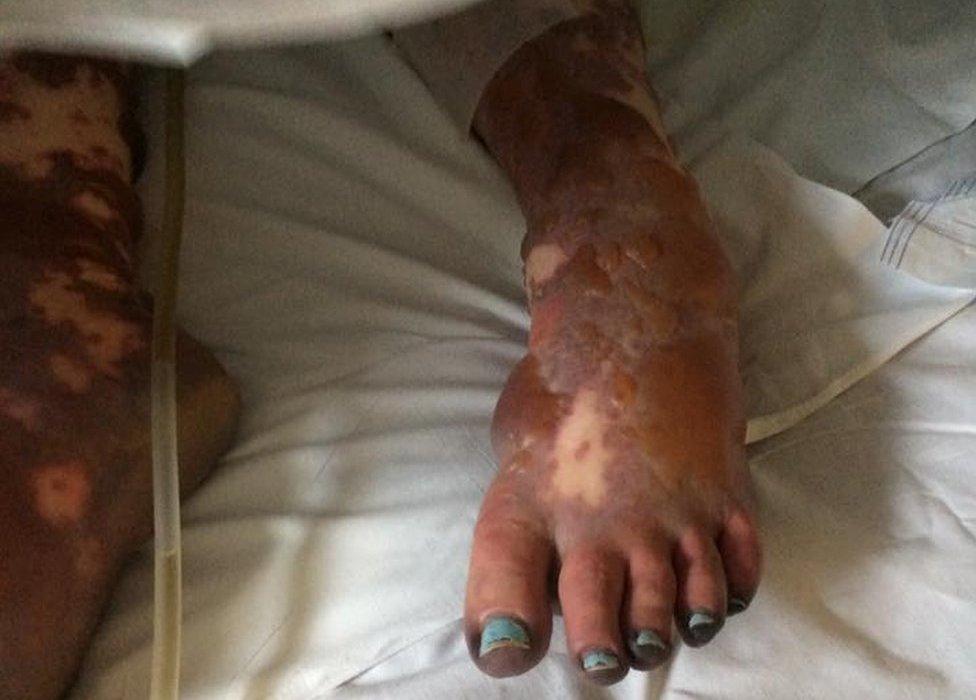
Miss Colechin had bacterial meningitis - which is rarer but more serious than viral meningitis.
She said she had been vaccinated, but the jab did not protect against the type of meningitis she had.
Claire Donovan of Meningitis Now said the rash on Miss Colechin's body would have been caused by septicaemia, which some people get as a result of certain meningitis bacteria.

Signs and symptoms
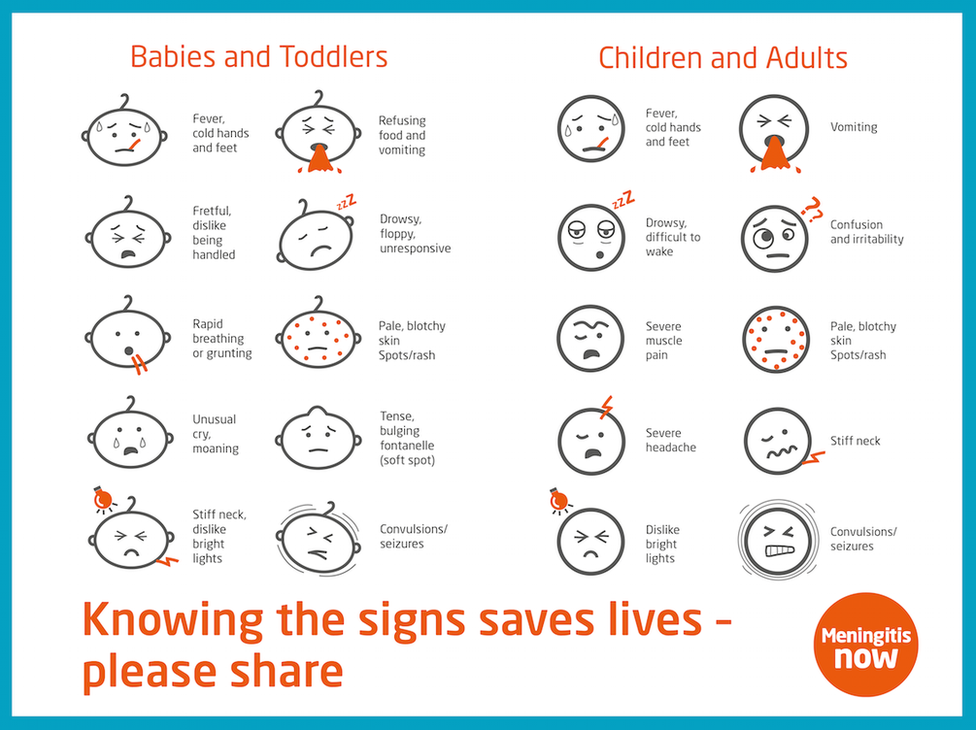
Meningitis is usually caused by bacteria or viruses
Meningitis is inflammation of the membranes that surround and protect the brain and spinal cord
Some bacteria that cause meningitis can cause septicaemia, also known as blood poisoning, and meningitis and septicaemia often happen together
There are an estimated 3,200 cases of bacterial meningitis and septicaemia each year in the UK
Following bacterial meningitis or septicaemia, one in 10 people will die and a third of survivors will be left with lifelong after-effects such as hearing loss, epilepsy, limb loss or learning difficulties
In the past 20 years, vaccines have been developed to give protection against some types of meningitis but there are not vaccines to protect against all types
Babies receive vaccines to help protect against some types of meningitis, external through the NHS childhood vaccine programme
Teenagers and university freshers are now being offered the Men ACWY vaccine, external
A small number of people at greater risk of contracting meningitis may be able to obtain these vaccines free

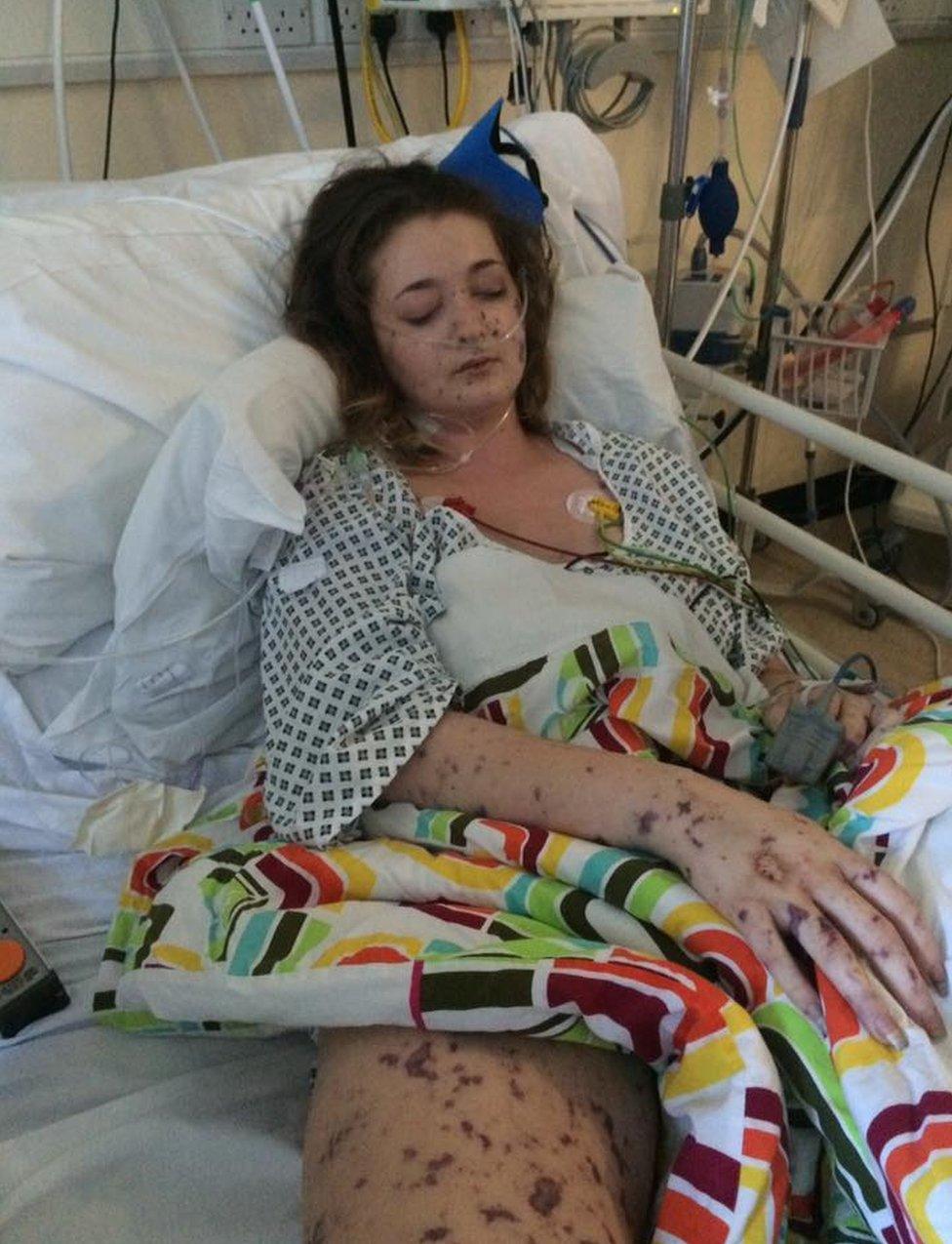
Charlene Colechin was treated at Chesterfield Hospital before being transferred to Sheffield
Paramedics were called out on 6 September but thought the teenager had flu because she did not have any marks.
However, her condition worsened and marks appeared the following day, when paramedics rushed her to hospital.
"Within minutes I was on a drip in the ambulance on the way to Chesterfield Hospital," she said.
"I was in a coma for nine days because all my organs were failing.
"I did die but obviously they brought me back."
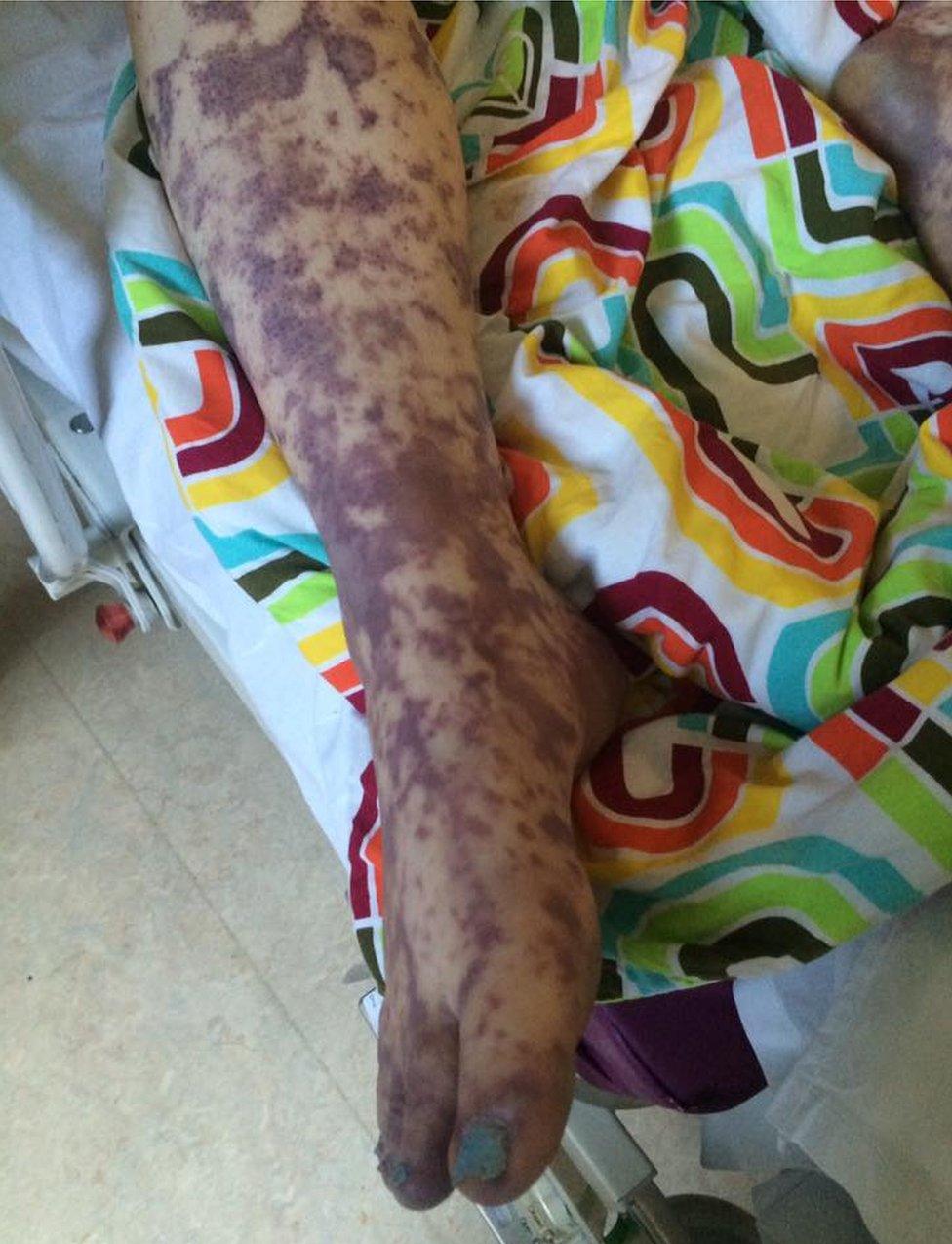
The teenager faces surgery to remove her toes and possibly her feet
She is now waiting for tests to see what parts of her feet will need to be amputated.
"My heels are black," she said. "That could mean dead tissue, which could be infected and which could go up my legs."
She hopes that sharing her photos will prevent other people from suffering the life-changing effects of the disease.
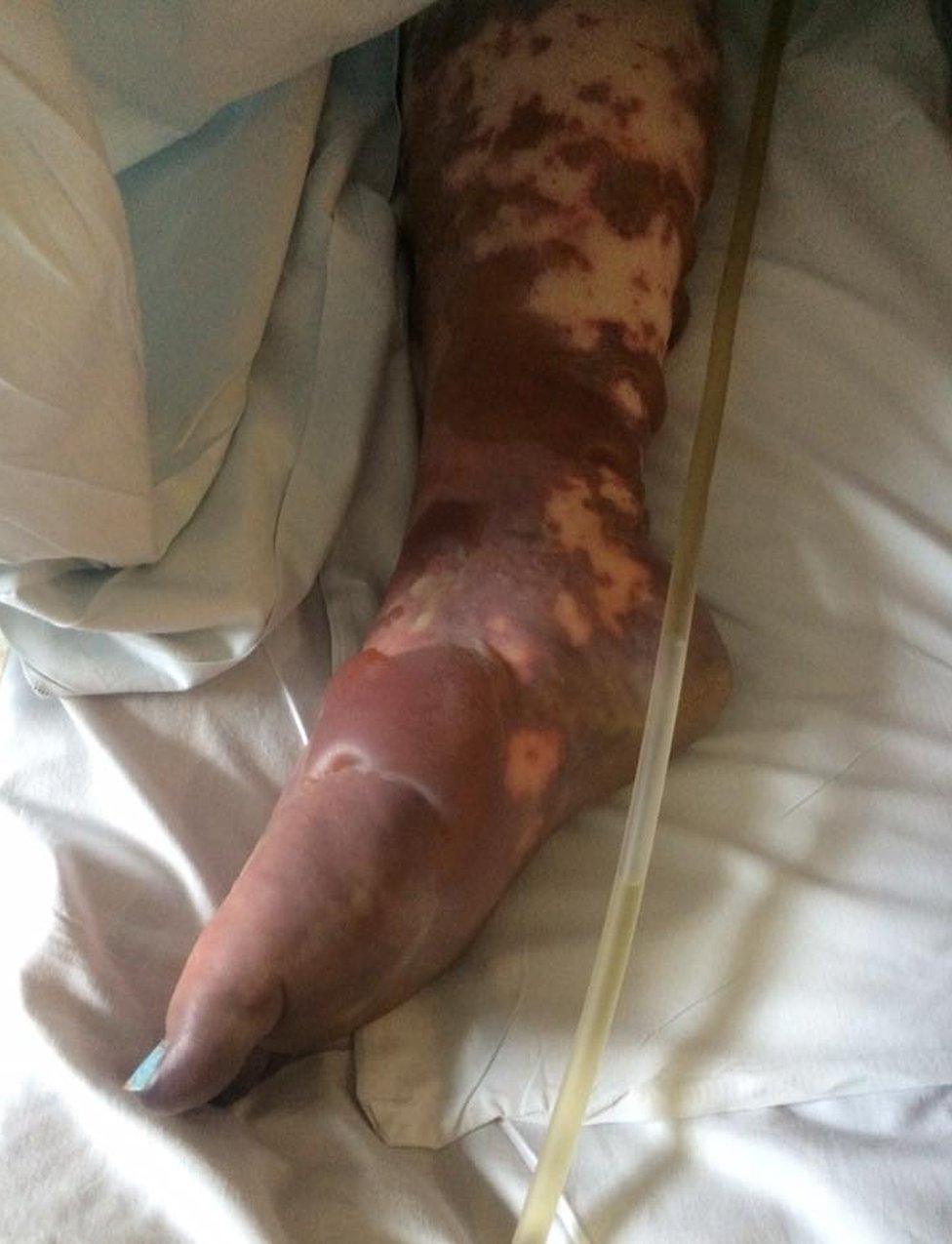
She said her heels are black, which could mean the tissue is dead
- Published5 October 2016

- Published1 October 2016
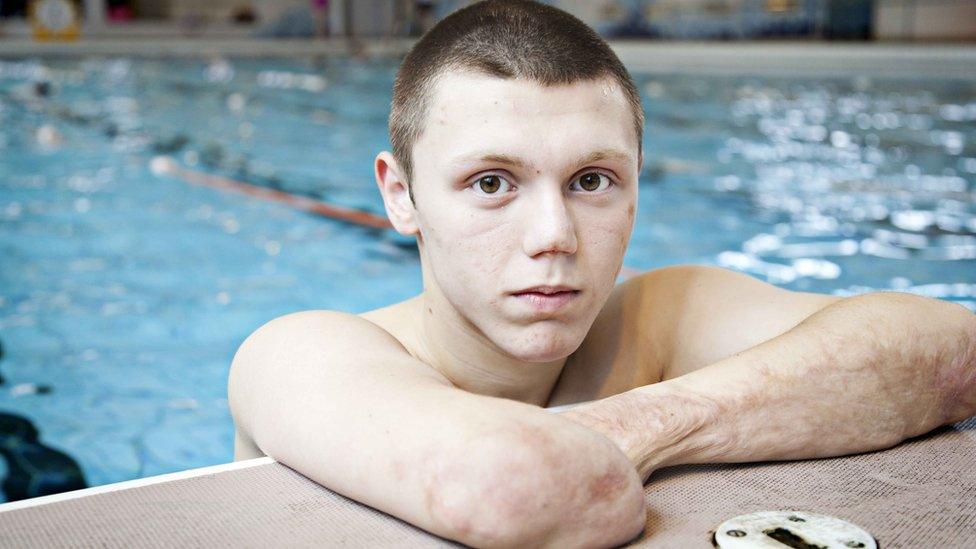
- Published17 August 2016

- Published2 March 2016
